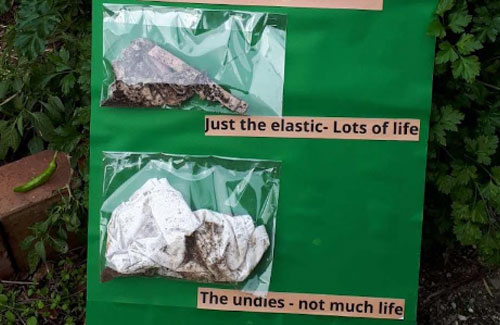The life in the soil and why you should soil your undies!

Diversity is important. Above ground, there is an amazing array of plants, birds, animals, flowers and insects. In the ocean, there are amazing fishes, crustaceans and other animals.
Diversity below the ground is important too. The micro-organisms below the soil are so tiny we used to not pay them much attention. Nowadays, scientists, microbiologists and farmers are beginning to understand how crucial they are to all life.
The term ‘soil food web’ is used to describe the types of microorganisms in the soil and the relationships among them. The term was coined by Dr Elaine Ingham, president of Soil Foodweb in Oregon.
Soil is more than dirt
Soil is made up of sand, clay and silt but it’s the life in the soil that is central to all the food we eat, and the plants and animals that grow on the land.
There are bacteria, earthworms, fungi, arthropods, nematodes and protozoa. Each type of microorganism has a function, from photosynthesizing, decomposing, shredding material to eating roots. Predators eat and poo out other microorganisms, and some work with fungi to provide nutrients and water to the plants and trees. With more sophisticated technology scientists have found that there are approx. 5 billion microorganisms in a teaspoon of soil.
Lots of life in the soil means healthy soil and healthy soil holds water and food plants use to grow. The healthier the soil, the more water it can hold which helps plants and trees survive during drought. These microorganisms can eat up chemicals and toxins, and clean algae from water. Pesticides applied to the soil kill the microorganisms.
Watch this short video from Soil Foodweb about how microorganisms keep soils alive.
Test your soil for microorganisms, by soiling your undies!
Soil microorganisms love to eat anything that has carbon in it. All living things are made of carbon and it’s how they turn living things into soil. So they love to eat natural fibres (carbon) such as cotton, silk, bamboo and linen. Carbon is a source of energy for them: it’s like cake to them.
How to ‘soil your undies’
- Get one pair of cotton undies. They do not have to be new, but they must be pure cotton (except for the elastic).
- You can cut them in half and do 2 sites if you wish
- Dig a hole approx. 5-8 cm deep and wide enough to lay the undies flat.
- Cover them with soil.
- Mark the spot so you know where to find them.
- Wait 4- 6 weeks and dig up the undies.
The more degraded the undies, the more microorganisms in your soil. Note: the elastic will not be eaten by the microorganisms.
This picture shows the difference between 2 locations. The pair on the top were buried in my veggie patch. The second pair were buried in a section on my neighbour’s place, where they regularly spray pesticide to get rid of weeds.

If you’d like to find out more about soil health in Australia, visit www.soilweekaustralia.com.au. Children and young people in grades 4, 5 and 6 or years 7, 8, 9 and 10 can take part in our school competition and win prizes for learning more about healthy soils.
References:
The Soil Your Undies Challenge was originally created by the USDA Natural Resources Conservation Service: https://www.nrcs.usda.gov/wps/portal/nrcs/detail/or/soils/health/?cid=nrcseprd1470410
Soil Foodweb: https://www.soilfoodweb.com/
Written by Bev Middleton, Sustainable Macleod member and founder of Soil Week Australia
